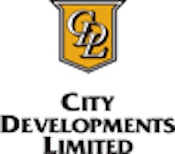Imagine a giant blimp, floating above a house or building, that provides shade from the sun while also acting as a storage unit. Powered by helium, the giant blimp could also double as a workers’ dormitory, reducing the carbon footprint when workers are transported to-and-from construction sites.
This unique idea was one of many suggested at the second Tropical and Sub-Tropical Green Building Councils Alliance Symposium, held on Wednesday on the opening day of the International Green Building Conference held in Singapore.
The blimp idea might sound like the stuff of fairy tales, but the man who came up with it, director of Malaysian architectural firm,ArchiCentre, Dr Tan Loke Mun, incorporated it in his future vision of a greener Kuala Lumpur.
Dr Tan said blimps based on the radical idea not only offer shade for buildings, they could also provide transportation services for commuters living or working in the building. And that is something that can reduce reliance on private cars and also address the lack of open spaces for parking in urban habitats.
He cited a poster from the 1960s that showed two giant blimps travelling over the Brazilian city of Rio de Janeiro, and said the poster was a source of inspiration for his idea to use blimps to green buildings by providing shade and reducing the heat generated by direct sunlight.
As Dr Tan reckons, what is fiction today could very well be reality tomorrow.
“The cartoon film, ‘UP’ had a blimp which floated away with a house,” he noted. “Even in the imagery coming out of Hollywood, which is prophetic in some sense, it’s a dream. And many years ago there was a show called ‘Multiplicity’, in which Michael Keaton had to attend so many meetings, he cloned himself. A year later, Dolly was cloned.”
He added that sometimes films can be a projection of things to come, and anticipates the technology to harness these eco solutions from blimps.
The highly regarded Malaysian architect is a well-known ardent supporter of green issues. Indeed, his own three-story house, called S11 after its location in Section 11, Petaling Jaya, was awarded the ‘Platinum’ status under the country’s Green Building Index or GBI.
The GBI index was designed specifically for Malaysia’s tropical climate and is the recognised rating mechanism for green buildings in the country. The GBI also acts as a guide to encourage developers to plan for sustainability from the initial design stage.
Dr Tan’s house took him two years to build and was conceptualised around the shade from a tree. The house has a giant canopy roof fitted with solar panels and over a dozen wind turbines to reduce heat within the house.
Dr Tan has gone beyond the usual green building features by installing his own rainwater filtration system as well as creating a food eco-system to encourage food sustainability. He and his family enjoy many fruits, such as pumpkins and papayas, from plants strategically placed around the house and walls of the house. He is looking at growing more plants in an effort to do more for food sustainability.
Green building materials also feature in his home. Much of the house was built using recycled materials. The staircase, for example, is made out of recycled steel.
He said about 90 per cent of his company’s current projects are green building projects, and he expects the number to reach 100 per cent eventually.
Dr Tan said he did not view the green building movement spreading across Asia as a “trend”.
“It is not a trend. It’s a right thing to do. Trends come and go,” he told participants at the plenary session which was attended by some 150 delegates from across the world.
Experts at the at the symposium agreed that developing the green building movement was crucial for Asia, but that it must promote the right design for the right climate and seek out new ideas for buildings in tropical areas.
Those same experts also discussed the socio-economic benefits of green buildings.
Director of international architectural and design firm Broadway Malyan Asia, Professor Jason Pomeroy, cited studies that discovered that a greener surrounding for patients in hospitals improved healthcare results.
The award-winning architect added that there are “great benefits of indoor and outdoor greenery in terms of productivity. We can see environmental benefits in the fact that greenery can help reduce ambience temperatures.”
He told the forum thathis company is studying the Green Plot Ratio of 100 buildings in Singapore. This ratio is a concept designed to help quantify greenery for green buildings by assessing the types of plants or shrubs used and formulating the right balance.
The study, which began last year, is conducted in partnership with the National University of Singapore and other Singapore agencies, including NParks and the Building and Construction Authority.
Professor Pomeroy said it was too early to reveal any findings, but “what we can say is that the Singapore government is very committed to greening the urban habitat. The Green Plot Ratio is a very good metric, in being able to quantify greenery for its socio economic environmental benefits.”
Eco-Business.com’s coverage of the International Green Building Conference 2011 is brought to you by City Developments Limited (CDL).






















